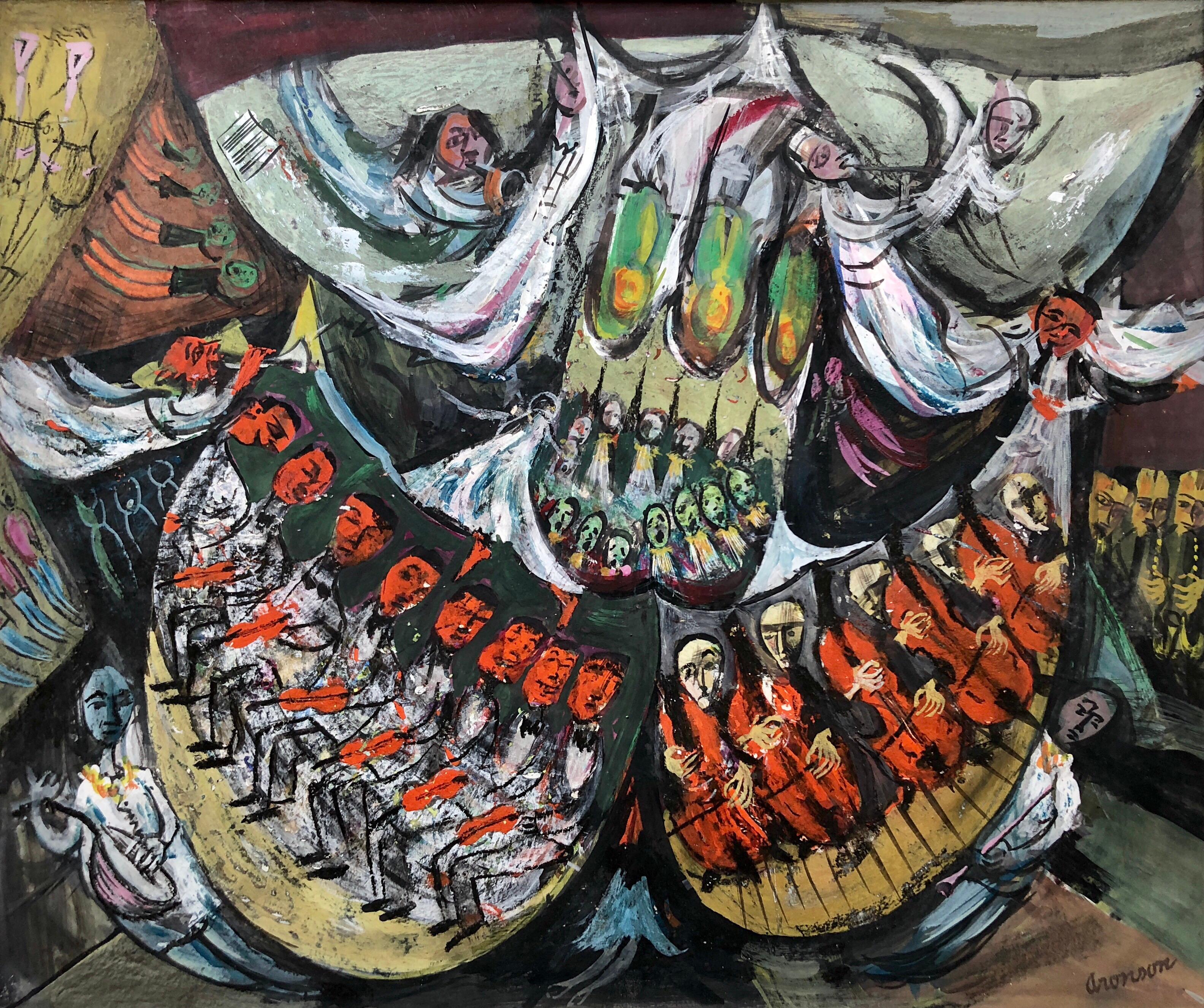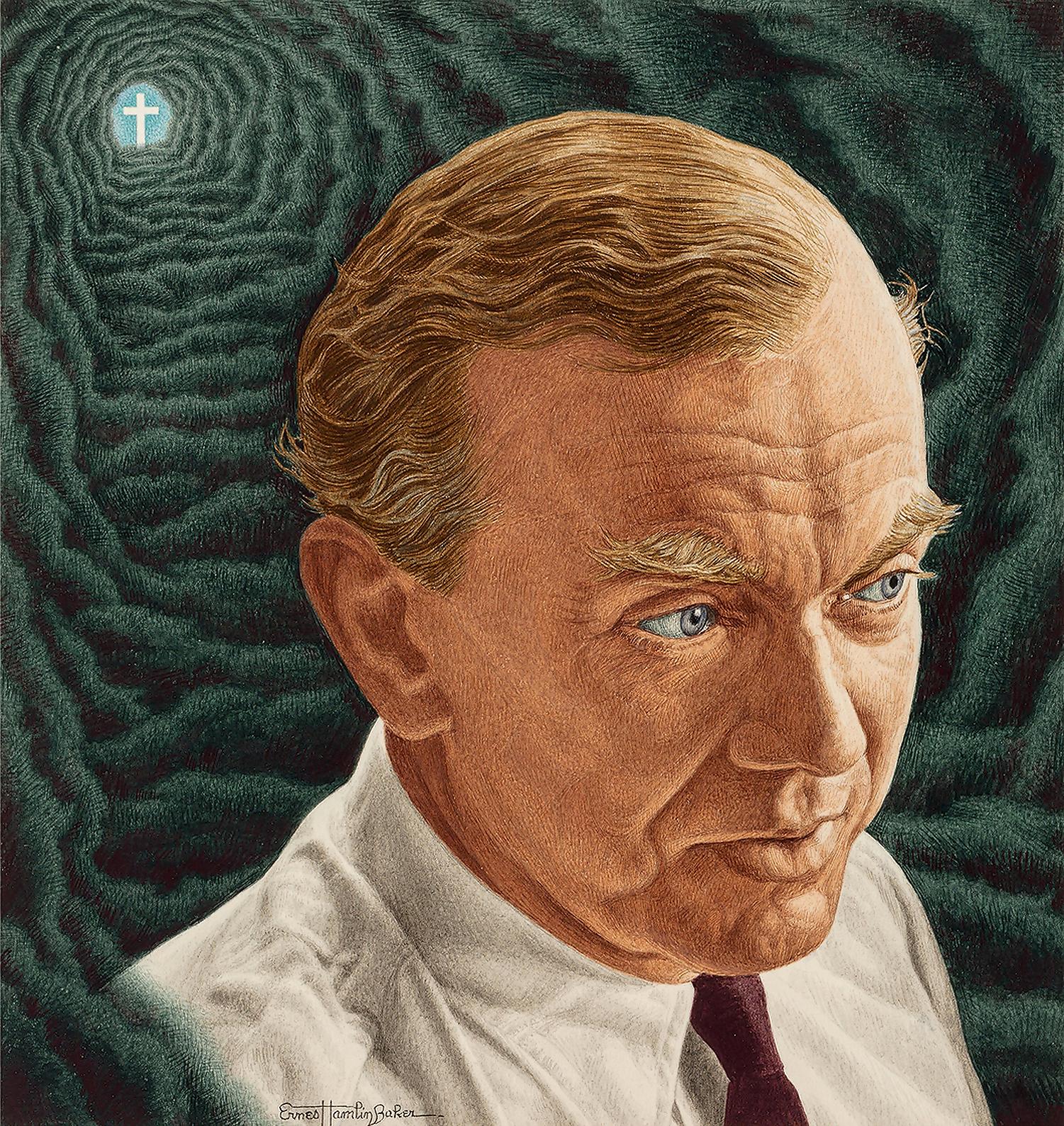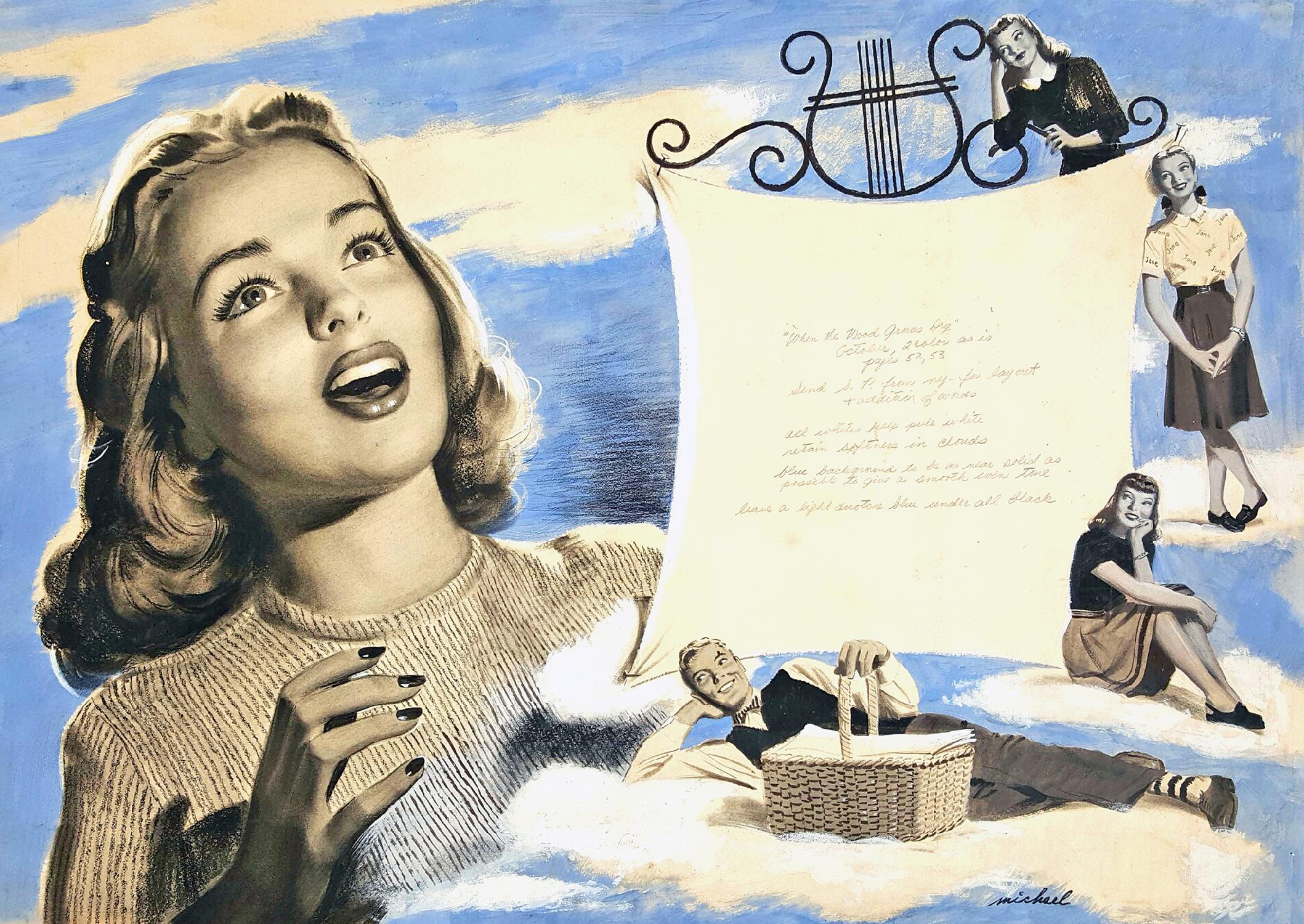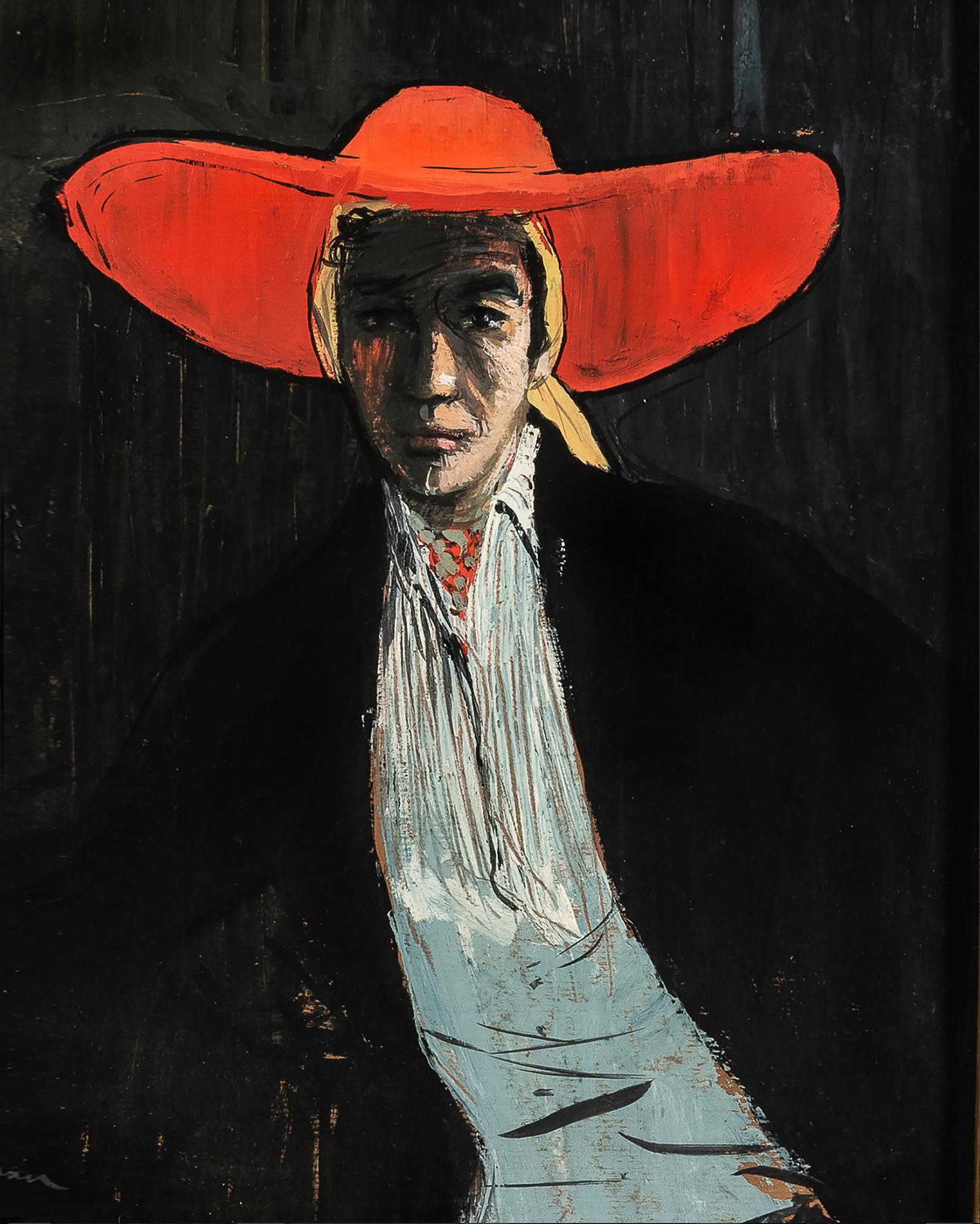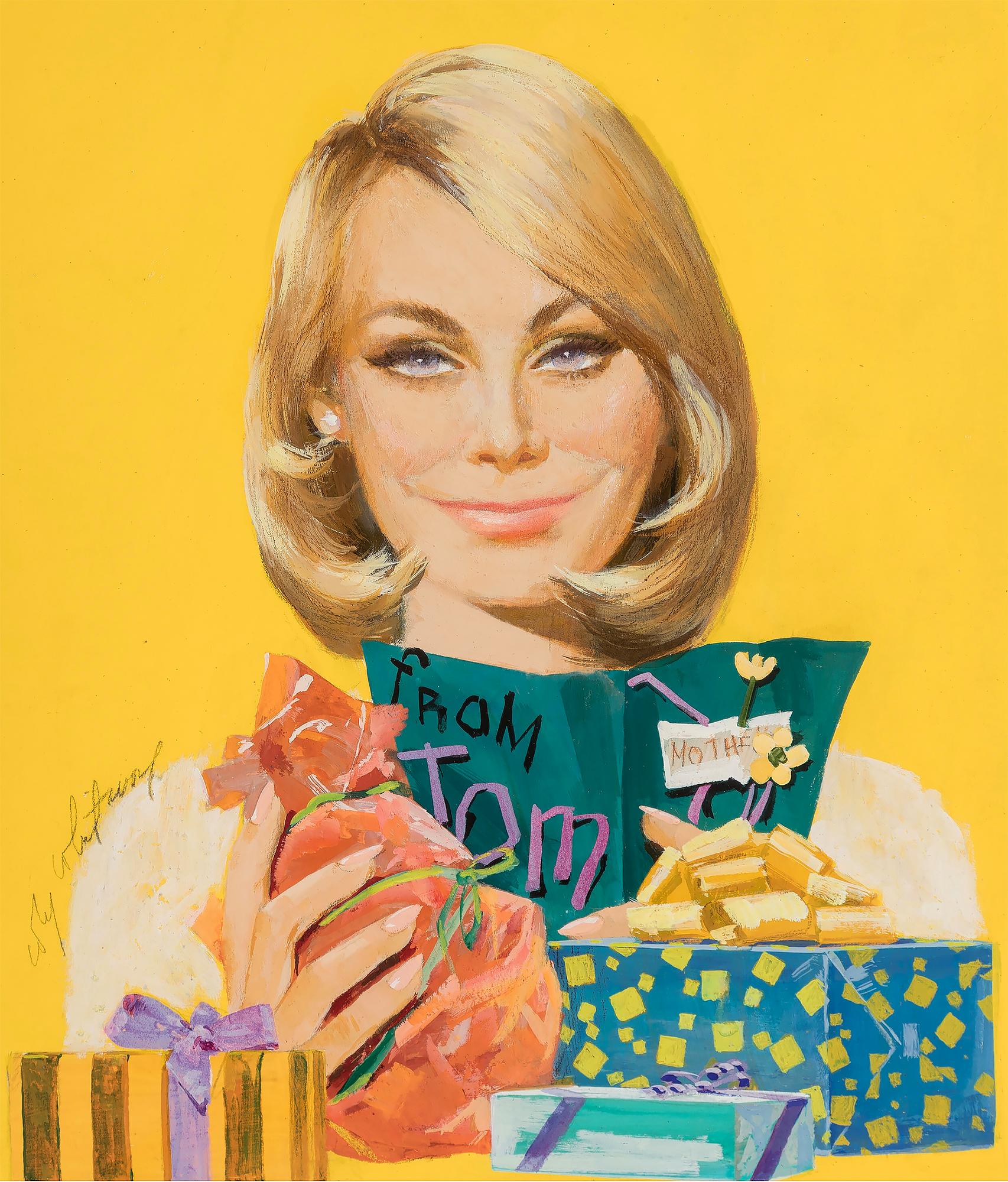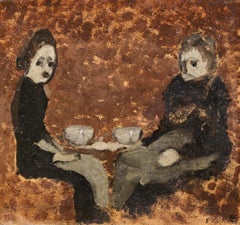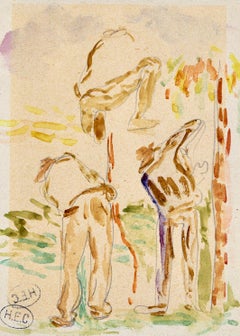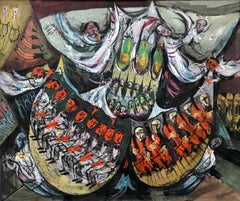
Miss Barbara Lutyens, Age Six, Rose Maynard Barton RWS (1865-1929)
View Similar Items
Want more images or videos?
Request additional images or videos from the seller
1 of 2
Rose Maynard BartonMiss Barbara Lutyens, Age Six, Rose Maynard Barton RWS (1865-1929)1901
1901
About the Item
- Creator:Rose Maynard Barton (1856 - 1929, English)
- Creation Year:1901
- Dimensions:Height: 8 in (20.32 cm)Width: 6 in (15.24 cm)
- Medium:
- Period:
- Condition:
- Gallery Location:Marlow, GB
- Reference Number:Seller: LFA005BF1stDibs: LU41531046713
About the Seller
5.0
Platinum Seller
These expertly vetted sellers are 1stDibs' most experienced sellers and are rated highest by our customers.
Established in 2001
1stDibs seller since 2016
668 sales on 1stDibs
Typical response time: 3 hours
More From This SellerView All
- La Baigneuse - Impressionist Portrait Oil Painting by Constantin TerechkovitchBy Constantin TerechkovitchLocated in Marlow, BuckinghamshireSigned impressionist figurative oil on board circa 1940 by Russian painter Constantin Terechkovitch. The piece depicts a portrait of a lady in a dress and sun hat undressing in a wooded area beside a lake. The red of the dress contrasts beautifully against the deep blue of the water. Signature: Signed lower right Dimensions: Framed: 23.5"x15.5" Unframed: 18.5"x10.5" Provenance: Private French collection - Angers Konstantin Tereshkovich went to school in Moscow, where his family had moved in 1907. In 1917 he attended classes briefly at the Moscow School of Painting, Sculpture and Architecture. In 1920, after the revolution and civil war, during which he may have served as a Red soldier, he made his way to Paris, where, since his adolescence, he had always dreamed of being a painter in the city's vibrant artistic climate. To welcome him in Paris were Larionov (this was the time of the Ballets Russes) and Soutine, who were full of the experience of living along with Chagall, Modigliani and many others in La Ruche, the famous rotunda built for the Paris Exposition and later used for artists' studios. Making a living as best he could, Tereshkovich went to draw at the Académie de la Grande-Chaumière. He joined the Montparnasse circle of Kisling, Kremen and Lanskoy and later that of Roland Oudot, Maurice Brianchon and Raymond Legueult. Later they went on to form Réalité Poétique (Poetic Reality), a spontaneous group of painters that only became formalised in 1948. Tereshkovich joined the French Foreign Legion in 1939 but was demobilised in 1940. In 1944 he fled with his family to Avallon, where he had often painted. From 1950 he lived and worked in Menton, travelling, either in search of new subject matter or for pleasure, and once every four years went to the Olympic Games, to indulge his taste for sport. When Tereshkovich arrived in Paris he was overwhelmed by it, at first letting himself simply be carried away like a tourist, by shows like the French Can-Can, whose young dancers he painted both on stage and backstage; these paintings brought him some success. In 1933, he designed sets and costumes for the Ballets Russes de Monte Carlo. That year, he also married. His wife became his favourite model, and she was joined later by their two daughters, in countless family scenes that show his evident happiness down the years. He painted a wide variety of subjects, including Portrait of Frédéric Lefèvre, L'Espagnole, La Belle Danoise, and Avallon Town Crier, all of which were typical of his style. He also painted still-lifes and landscapes, such as Church near Avallon and Landscape at Villeneuve, and many horse racing scenes (he was a great racing enthusiast). In addition, he also produced many lithographs, some of which were illustrations for works by Colette or Chekhov, as well as designs for ceramics and tapestries. In his landscapes of the outskirts of Paris and the nearby countryside he would seize on a sudden intense ray of light piercing the mists on the Seine and turn it into something quite personal. During his travels, he went in search of ever more distant landscapes, both in France and beyond. Over the years, he also painted many portraits of his painter friends and others whom he met. Some of these portraits are entirely predictable, such as that of Bonnard, for whom he had nothing but admiration, but some of his other subjects are more surprising. These include: Soutine, Bonnard, Matisse, Utrillo, Vlaminck, Dunoyer de Segonzac, Rouault, Derain, Friesz, Van Dongen and Braque. Tereshkovich exhibited in various group exhibitions, including: from 1925 at the Salon d'Automne, Paris; in 1929, in Moscow, Tretyakov Gallery, along with Chagall, Soutine, Zadkine and Puni (the exhibition of Russian artists working in France). He went on to show work in many exhibitions around the world, such as: 1951, 1st Menton Biennale, where he won the Grand Prix; 1954 to 1958, 1963, the École de Paris exhibition at the Galerie Charpentier; regularly at the Salon des Peintres Témoins de leur Temps; 1972 Galerie des Granges, Geneva, Les Maîtres de la Réalité Poétique; and 2003, Musée de Montmartre, Paris, A Russian Summer in Montmartre: St Petersburg Artists in Paris in the Early 20th Century. He also showed work in solo exhibitions: 1927 Paris, Galerie Ch. Aug. Girard; 1934 Geneva, Musée de l'Athénée; 1937 Chicago, New York; 1938 Paris, Galerie de l'Élysée; 1942 Paris, Galerie Pétridès; 1946 Paris, Galerie Dubourg; 1948, 1951 Paris, Galerie Bernier; 1953 Paris, Galerie Pétridès, and Nice, Galerie Matarasso (watercolours and lithographs); 1957 Paris...Category
Mid-20th Century Impressionist Portrait Paintings
MaterialsOil, Board
- The Light Refreshment - Nabis Oil, Seated Figures in Interior - Edouard VuillardBy Edouard VuillardLocated in Marlow, BuckinghamshireSigned figurative oil on board circa 1890 by French Nabis school painter Edouard Vuillard. The work depicts two seated ladies dressed in black with grey pinafores enjoying coffee together. Illustrated in the Catalogue Raisonne of Edouard Vuillard by Antoine Salomon and Guy Cogeval - Volume I, Page 229 - Reference IV-7 This striking work dates to between 1890 and 1891 which was without doubt Vuillard’s greatest decade as an artist. At this time the painter was working with the group of artist known as "Les Nabis" which included Pierre Bonnard, Maurice Denis, Paul Ranson, Ker-Xavier Roussel, Félix Vallotton, Paul Sérusier and Auguste Cazalis. The group played a large part in the transition from impressionism and academic art to abstract art, symbolism and the other early movements of modernism. They believed that a work of art was not a depiction of nature, but a synthesis of metaphors and symbols created by the artist. Signature: Signed lower right Dimensions: Framed: 10.25"x20.25" Unframed: 9.25"x10.25" Provenance: Renou et Poyet - Paris Roland, Browse & Delbanco - London (labels verso) c. 1955 The collection of Sir Alec Guinness Galerie Jan Krugier, Geneva - 1972 Nichido Gallery - Tokyo 1972 Private collection - Japan Christie's London - Impressionist & Modern Art - June 2016 Édouard Vuillard attended the Lycée Condorcet in Paris, where he made friends with Maurice Denis, Lugné-Poe, and Ker-Xavier Roussel, later his brother-in-law. He studied in Maillart’s studio; for six weeks came under the tutelage of Jean-Léon Gérôme at the École des Beaux-Arts in Paris; and later under William Bouguereau and Robert at the Académie Julian, where he became closely linked with the Nabis group (from the Hebrew word for ‘prophet’). He met Marcel Proust in 1902. From 1908, he taught at the Académie Ranson. In 1937, he was elected member of the Institute. At first, Vuillard painted small subjects, disciplined and proficient, qualities for which the prestigious École Française was famous. His earliest still-lifes (1888) are astonishing in their decisiveness and subtlety. His empathy for the object had already compelled him to soften its appearance; the object, which, by virtue of its bright or glossy presence, remained the nonego and the ‘thing represented’ for so many others. ‘Intimacy’ developed immediately between the painter and this modest environment; inhabiting it every day enabled him to celebrate its splendour, and it was to remain his favourite environment. But he was already alternating between small portraits and still-lifes, which gained recognition because of their natural qualities and dignity of tone: a rare combination in a beginner. About 1890, influenced indirectly by Paul Gauguin, all the certainties which the self-styled Nabis painters had contented themselves with suddenly collapsed. Everything was called into question again: both the linear layout of the picture and its colour scheme; the choice of subject and its material aspect; its manufacture and its purpose. Vuillard’s paintings at that time show surprising, bold innovations and an arbitrary power, which one would expect 15 or 20 years later at the height of the Fauvist period. The preoccupation with an internal geometry set them apart from earlier studies. From then on, the paintings were based on forms, lines, and colours. Vuillard made concessions. He produced a portrait or interior with its furniture and its wallpapers, in which the family inhabiting it, evolves. Treated with flat areas of colour and solid shades of ochres, reds, blues, and saffron yellow, without modulation, they seem to prefigure certain paintings by Henri Matisse and Roger de La Fresnaye. In 1891, Vuillard painted an Elegant Lady, a silhouette seen from the back; a long vertical shape starting from the hair decorated with brown feathers; there is a kind of pink cloak, the tight and never-ending black skirt, erect in front of a half-open, bright orange door in a green wall, from where the light of another vertical shape emerges, which is bright yellow, and is reflected in red on the parquet at the feet of the elegant lady. This painting meets his concerns about the actual moment of creating ‘harmonies corresponding to our feeling’, and by virtue of its almost geometric structure, its drawing entirely free of detail, its light effects and colour harmonies, very much prefigures aspects of the future Abstraction movement and is oddly reminiscent of the final period of Nicolas de Staël. All too often, Vuillard is only admired in his role as the harmonist, the serene contemplator who combines an exquisite sense of nuance, rhythms, and values with the most acute observation. These singular investigations, these three-dimensional meditations including a table, a folding metal cot...Category
1890s Impressionist Figurative Paintings
MaterialsOil, Board
- Etude de travailleurs - Impressionist Figurative Watercolor by Henri CrossBy Henri Edmond CrossLocated in Marlow, BuckinghamshireImpressionist watercolour on paper circa 1890 by French Neo-Impressionist painter Henri Edmond Cross. The work is a rear view study of three workers in standing and kneeling position...Category
1890s Impressionist Figurative Paintings
MaterialsPaper, Watercolor
- The Young Hunter - French Realist Portrait Oil Painting by Victor GilbertBy Victor Gabriel GilbertLocated in Marlow, BuckinghamshireSigned oil on panel portrait by French realist painter Victor Gabriel Gilbert. The work depicts a young hunter wearing a brown outfit with laced up leather boots standing on a path i...Category
1890s Realist Portrait Paintings
MaterialsPanel, Oil
- Joyeux Pierrot - Impressionist Oil, Portrait by Armand Francois HenrionBy Armand (François Joseph) HenrionLocated in Marlow, BuckinghamshireSigned impressionist oil on panel portrait circa 1910 by French painter Armand Francois Henrion. The work depicts a happy, smiling Pierrot - a French clown - with his face painted white wearing white ruffles and a mint green hat. Signature: Signed lower right Dimensions: Framed: 9"x7.5" Unframed: 7"x5.5" Provenance: Private French collection Armand François Joseph Henrion...Category
1910s Impressionist Portrait Paintings
MaterialsOil, Panel
- Pierrot Surpris! - Impressionist Oil, Portrait by Armand Francois HenrionBy Armand (François Joseph) HenrionLocated in Marlow, BuckinghamshireSigned impressionist oil on panel circa 1910 by French painter Armand Francois Henrion. This charming work depicts a portrait of a surprised Pierrot - a French clown - with a white powdered face wearing white ruffles and a pink hat. The pierrot is set against a brown background. Signature: Signed lower right Dimensions: Unframed: 7"x5.5" This painting is not currently framed but a suitable frame can be sourced if required Provenance: Private French collection Armand François Joseph Henrion...Category
1910s Impressionist Portrait Paintings
MaterialsOil, Panel
You May Also Like
- Modernist Orchestra Musical Gouache Painting Boston ExpressionistBy David AronsonLocated in Surfside, FLVery vibrant, dynamic orchestra scene reminiscent of the work of Mopp (Max Oppenheim) David Aronson, (1923-2015) son of a rabbi, was born in Lithuania in 1923 and immigrated to America at the age of five. He settled in Boston, Massachusetts where he studied at the school of the Museum of Fine Arts under Karl Zerbe, a German painter well known in the early 1900s. Aronson later taught at the school of the Museum of Fine Arts for fourteen years and founded the School of Fine Art at Boston University where he is today a professor emeritus. An internationally renowned sculptor & painter, Aronson has won acclaim for his interpretation of themes from the Hebrew Talmud and Kabala. His best known works include bronze castings, encaustic paintings, and pastels. His work is included in many important public and private collections, and has been shown in several museum retrospectives around the country. He is considered to be one of the most important 20th century American artists. At twenty-two David Aronson had his first one-man show at New York's Niveau Gallery. The next year, six of his Christological paintings were included in the Fourteen Americans exhibition at Manhattan's Museum of Modern Art where Aronson’s work was included alongside abstract expressionists Arshile Gorky, Robert Motherwell and Isamu Noguchi. In the 1950s, Aronson turned more toward his Jewish heritage for the inspiration for his art. Folklore as well as Kabalistic and other transcendental writings influenced his work greatly. The Golem (a legendary figure, brought to life by the Maharal of Prague out of clay to protect the Jewish community during times of persecution) and the Dybbuk (an evil spirit that lodges itself in the soul of a living person until exorcised) frequently appear in his work. In the sixties, Aronson turned to sculpture. His work during this period is best exemplified by a magnificent 8’ x 4’ bronze door which now stands at the entrance to Frank Lloyd Wright's Johnson Foundation Conference Center for the Arts in Racine, Wisconsin. In the seventies and eighties, Aronson continued his work in pastel drawings, paintings, and sculptures, often exploring religion and the frailties of man's nature. During this time, in addition to a traveling retrospective exhibition and many one-man shows in New York, Los Angeles, Chicago, and Boston at the Pucker-Safrai Gallery on Newbury Street, Aronson won many awards and became a member of the National Academy of Design in New York. Two years ago he retired from teaching to work full-time in his studio in Sudbury, Massachusetts. included in the catalog Contemporary Religious Imagery in American Art Catalog for an exhibition held at the Ringling Museum of Art, March 1-31, 1974. Artists represented: David Aronson, Leonard Baskin, Max Beckmann, Hyman Bloom, Fernando Botero, Paul Cadmus, Marvin Cherney, Arthur G. Dove, Philip Evergood, Adolph Gottlieb, Jonah Kinigstein, Rico Lebrun, Jack Levine, Louise Nevelson, Barnett Newman, Abraham Rattner, Ben Shahn, Mark Tobey, Max Weber, William Zorach and others. Selected Awards 1990, Certificate of Merit, National Academy of Design 1976, Purchase Prize, National Academy of Design 1976, Joseph Isidore Gold Medal, National Academy of Design 1976, Purchase Prize in Drawing, Albrecht Art Museum 1975, Isaac N. Maynard Prize for Painting, National Academy of Design 1973, Samuel F. B. Morse Gold Medal, National Academy of Design 1967, Purchase Prize, National Academy of Fine Arts 1967, Adolph and Clara Obrig Prize, National Academy of Design 1963, Gold Medal, Art Directors Club of Philadelphia 1961, 62, 63, Purchase Prize, National Institute of Arts and Letters 1960, John Siimon Guggenheim Fellowship 1958, Grant in Art, National Institute of Arts and Letters 1954, First Prize, Tupperware Annual Art Fund Award 1954, Grand Prize, Third Annual Boston Arts Festival 1953, Second Prize, Second Annual Boston Arts Festival 1952, Grand Prize, First Annual Boston Arts Festival 1946, Traveling Fellowship, School of the Museum of Fine Arts 1946, Purchase Prize, Virginia Museum of Fine Arts 1944, First Popular Prize, Institute of Contemporary Art 1944, First Judge's Prize, Institute of Contemporary Art Selected Public Collections Art Institute of Chicago Virginia Museum of Fine Arts Bryn Mawr College Brandeis University Tupperware Museum, Orlando, Florida DeCordova Museum Museum of Modern Art Print Collection, New York Atlanta University Atlanta Art...Category
20th Century Expressionist Figurative Paintings
MaterialsGouache, Board
- Carmel Home, California Town LandscapeBy Lillie HeebnerLocated in Soquel, CAA beautiful watercolor painting of a brown Carmel house with a white picket fence in front by Lillie Esther (Hillman) Heebner, a Watsonville, Monterey Bay area, California watercolor artist. Unsigned, but acquired with a collection of her work. Lillie (Lil) E. Heebner was guided through life by her creativity. Even at 92, she never felt old, and often said so. She met every situation in life—including death—with ingenuity. Although born in Richmond, Lillie lived in Watsonville all her life. Her father, Frederick H. Hillman, grew up on a strawberry ranch in Pajaro, graduated from Watsonville High School in 1916, and served in France during World War I. He later worked for Martinelli's Apple Cider plant and became foreman. Lillie's mother, Esther C. Hobson, moved as an infant from Bakersfield to Santa Cruz with her family in 1901, when they founded Hobson's Bath House at the Santa Cruz Boardwalk...Category
Mid-20th Century American Impressionist Portrait Paintings
MaterialsWatercolor, Cardboard
- "The Clown", 20th Century Gouache on Cardboard by Spanish Artist Celso LagarBy Celso LagarLocated in Madrid, ESCELSO LAGAR Spanish, 1891 - 1966 THE CLOWN signed and dated "Lagar 52" (lower right) gouache on cardboard 10-5/8 x 8 inches (27 x 20.5 cm.) PROVENANCE Private French Collector Cel...Category
1950s Fauvist Portrait Paintings
MaterialsCardboard, Gouache
- Introspective Woman / Actress on Movie Set. Mid Century Art, Female IllustratorBy Lorraine FoxLocated in Miami, FLLorraine Fox was an American illustrator and commercial artist who illustrated magazines, book covers, and advertisements. Among the magazines, she illustrated for were Woman's Day, ...Category
1960s Post-Impressionist Figurative Paintings
MaterialsWatercolor, Gouache, Board, Pencil
- Novelist Graham Green. Time magazine Cover IllustrationBy Ernest Hamlin BakerLocated in Miami, FLWork is nicely archival matted to 17.75 x 16.75 inches but not framed. Signed lower left Published : Oct. 29, 1951 Cover, Time MagazineCategory
1950s Photorealist Portrait Paintings
MaterialsBoard, Gouache
- When the Wood Grows Dry "Good House Keeping Magazine", 1948By Michael SilverLocated in Miami, FLWhen the Wood Grows Dry "Good House Keeping Magazine" illustration How friendship and love were depicted in post-war America. There was a sense of innoc...Category
1940s Academic Figurative Paintings
MaterialsGouache, Board
